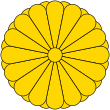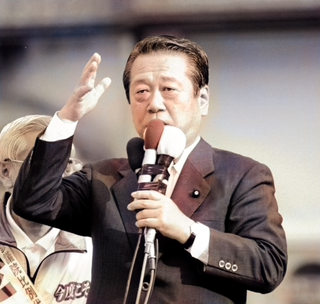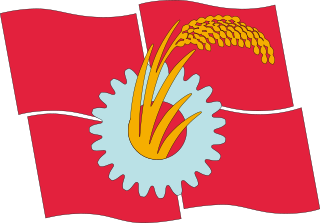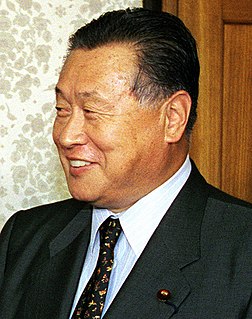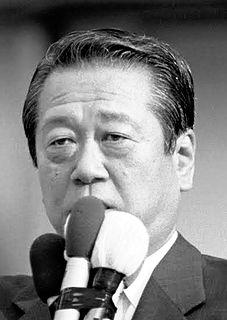| Northern Japan |
|---|
| District | Seats up | Incumbents | Party | Result | Candidates
(Party)
Vote share |
|---|
| Hokkaidō | 2 (-2) | Hisashi Kazama | Kōmei | 2 seats lost by reapportionment
LDP, DPJ and Kōmei incumbents retired
LDP hold
DPJ incumbent re-elected
DPJ gains top tōsen | | Naoki Minezaki (DPJ) 31.2%
Yoshio Nakagawa (LDP) 28.1%
Tomoko Uchiyama (JCP) 23.5%
Kentarō Ono (LP) 6.3%
Shirō Kayano (SDP) 5.7%
Masami Mizuyoshi (NSP) 1.3%
Ken'ichi Sawada (YLP) 1.3%
Ryōko Matsukawa (LL) 1.3%
Hideo Murata (I) 1.1%
Nobuhito Sendai (Ishin) 0.3% |
| Noriyuki Nakao | DPJ |
| Naoki Minezaki | DPJ | |
| Masaaki Takagi | LDP |
| Aomori | 1 | Kanpei Matsuo | Independent
(ex-NFP) | Incumbent retired
Independent (joined IA) | Masami Tanabu (I) 46.7%
Akiyoshi Kaneiri (LDP) 36.0%
Chizuko Takahashi (JCP) 9.3%
Kiyohiko Narumi (I) 7.1%
Keiko Saitō (LL) 0.9% |
| Iwate | 1 | Motoo Shiina | Independent | Incumbent re-elected (joined IA) | | Motoo Shiina (I) 38.5%
Riki Nakamura (I) 34.6%
Shizuko Abe (SDP) 13.7%
Norikatsu Sugawara (JCP) 9.5%
Fumiko (?) Yamada (?) 3.7% |
| Miyagi | 2 (+1) | Kaname Endō | LDP | Incumbent lost re-election
DPJ pickup
DPJ gains top tōsen | Mitsuru Sakurai (DPJ) 26.0%
Ichirō Ichikawa (I) 23.2%
Kaname Endō (LDP) 14.0%
Sayuri Kamata (I) 11.2%
Michiko Satō (JCP) 10.6%
Yoshihiro Satō (SDP) 7.1%
Yukio Nakazawa (I) 3.4%
Kikumi Hayasaka (WP) 2.3%
Akemi Ishikawa (LL) 2.2% |
| 1 seat gained by reapportionment
LDP hold | |
| Akita | 1 | Man Sasaki | LDP | Incumbent retired
LDP hold | | Shigenobu Saitō (LDP) 39.9%
Tatsurō Nakajima (DPJ) 27.1%
Kazuko Ogiwara (JCP) 14.3%
Mamoru Kudō (SDP) 13.6%
Shunsaku Hiramoto (NSP) 3.2%
Haruo Hashimoto (LL) 1.9% |
| Yamagata | 1 | Teibin Suzuki | LDP | Incumbent retired
LDP hold | | Kōichi Kishi (LDP) 49.3%
Toshiko Muraki (DPJ) 17.8%
Shōji Tanabe (SDP) 16.1%
Masaru Aoki (JCP) 10.1%
Eiko Gotō (LL) 6.6% |
| Fukushima | 2 | Seigo Suzuki | LDP | Incumbent retired
LDP hold
Incumbent lost re-election
DPJ pickup
DPJ gains top tōsen | | Yūhei Satō (I – DPJ) 32.6%
Mitsuhide Iwaki (LDP) 24.9%
Shizuo Satō (LDP) 23.6%
Hideki Satō (JCP) 10.6%
4 other candidates (I/NSP/YLP/LL) 8.3% |
| Shizuo Satō | LDP | |
| Eastern and Central Japan |
|---|
| District | Seats up | Incumbents | Party | Result | Candidates
(Party – endorsements)
Vote share |
|---|
| Ibaraki | 2 | Itsuo Nomura | LDP | NSP incumbent retired
LDP incumbent lost re-election
LDP hold
DPJ pickup
DPJ gained top tōsen | | Akira Gunji (DPJ) 27.9%
Kōichi Kuno (LDP) 23.1%
Itsuo Nomura (LDP) 19.2%
Osamu Ojima (JCP) 10.1%
Hiromitsu Mutō (LP) 7.0%
Mariko Yoshioka (WP) 5.6%
Hiroyuki Sugimori (NSP) 3.4%
Takao Gunji (LL) 2.7%
Masao Kataniwa (YLP) 1.0% |
| Osamu Yatabe | NSP | |
| Tochigi | 2 | Itten Kamiyoshihara | LDP | Incumbent re-elected
Incumbent lost re-election
DPJ pickup
DPJ gained top tōsen | | Susumu Yanase (DPJ) 39.7%
Tetsurō Yano (LDP) 24.7%
Itten Kamiyoshihara (LDP) 19.0%
Setsuko Nomura (JCP) 8.3%
Iwao Takahashi (SDP) 4.1%
Takuo Inaba (I) 1.9%
Ichirō Yamada (YLP) 1.7%
Tsuneaki Umeki (LL) 0.6% |
| Tetsurō Yano | LDP | |
| Gunma | 2 | Hirofumi Nakasone | LDP | Incumbents re-elected | | Hirofumi Nakasone (LDP) 33.7%
Kōsei Ueno (LDP) 25.4%
Shio Yamazaki (I) 19.3%
Yoshikazu Arima (JCP) 15.2%
Yurika Kiya (LL) 6.3% |
| Kōsei Ueno | LDP | |
| Saitama | 3 (+1) | Noriyuki Sekine | LDP | LDP incumbent lost re-election
Independent (ex-NFP) pickup
Independent gained top tōsen | Takujirō Hamada (I) 22.6%
Renzō Togashi (JCP) 19.9%
Toshio Fujii (DPJ) 19.0%
Noriyuki Sekine (LDP) 14.3%
Minoru Kurihara (LDP) 12.0%
Fumihiro Himori (SDP) 5.4%
Mieko Yana (LL) 3.2%
Tadashi Hosokawa (NSP) 1.6%
Kazushige Yamada (YLP) 1.1%
Setsuo Yamaguchi (I) 0.7%
Masakazu Imazawa (Ishin) 0.2% |
| Hideyuki Seya | SDP | SDP incumbent retired
JCP pickup |
| 1 seat gained by reapportionment
DPJ pickup |
| Chiba | 2 | Wakako Hironaka | Independent | Incumbents re-elected | | Wakako Hironaka (I) 32.3%
Yutaka Inoue (LDP) 31.4%
Makoto Nakajima (JCP) 21.2%
Keiko Machiyama (WP) 5.0%
Etsuko Nagata (NSP) 4.6%
Tsuneari Murata (LL) 3.4%
Kunihide Yoshinaga (YLP) 2.1% |
| Yutaka Inoue | LDP | |
| Tokyo | 4 | Toshiko Hamayotsu | Kōmei | Kōmei incumbent re-elected
DPJ pickup
DPJ gained top tōsen | | Toshio Ogawa (DPJ) 19.2%
Toshiko Hamayotsu (Kōmei) 18.1%
Miyo Inoue (JCP) 16.8%
Atsuo Nakamura (I) 13.4%
Kiyoko Ono (LDP) 11.6%
Kōji Tsukahara (LDP) 8.4%
Tetsu Ueda (I) 4.3%
Shunsuke Iwasaki (SDP) 3.8%
Hiroko Suzuki (WP) 0.8%
Shintarō Kō (LL) 0.8%
Yoshimori Inori (SPP) 0.7%
Eiko Toyama (NSP) 0.7%
Isao Nakamura (YLP) 0.6%
10 other candidates 0.7% |
| Kōichirō Ueda | JCP | |
vacant
(last held by Kensaku Morita, LDP) | LDP incumbent lost re-election
JCP incumbent retired
JCP hold
NPH pickup | |
| Kiyoko Ono | LDP | |
| Kanagawa | 3 (+1) | Fumio Saitō | LDP | DPJ incumbent re-elected
LDP incumbent lost re-election
DPJ pickup
DPJ gains top tōsen | | Keiichirō Asao (DPJ) 18.0%
Kimie Hatano (JCP) 14.8%
Keiko Chiba (DPJ) 14.3%
Marutei Tsurunen (I) 14.1%
Fumio Saitō (LDP) 13.0%
Tomoko Abe (SDP) 8.4%
Isao Makishima (LDP) 8.0%
Takashi Hidaka (LP) 6.8%
Yoshiko Bannai (NSP) 0.8%
Katsuo Satō (YLP) 0.5%
5 other candidates 1.4% |
| Keiko Chiba | DPJ | |
| 1 seat gained by reapportionment
JCP pickup | |
| Niigata | 2 | Kazuo Majima | LDP | SDP incumbent re-elected
LDP incumbent lost re-election
LDP hold
(Tanaka was retroactively recognized as LDP candidate) | | Naoki Tanaka (I) 24.6%
Kinuko Ōbuchi (SDP) 22.1%
Kazuo Majima (LDP) 20.2%
Yukio Hoshino (I) 18.7%
Kanji Igarashi (JCP) 8.2%
Satoshi Honda (LP) 3.8%
Kazuaki Meguro (LL) 2.4% |
| Kinuko Ōbuchi | SDP | |
| Toyama | 1 | Yoshio Nagata | LDP | Incumbent re-elected
post-election: incumbent died within 3 months, DPJ pickup by kuriage-tōsen | | Yoshio Nagata (LDP) 47.7%
Masaaki Tanibayashi (DPJ) 21.1%
Shigeru Tajiri (SDP) 17.3%
Kazuyuki Izumino (JCP) 11.0%
Hisayoshi Nakada (LL) 2.9% |
| Ishikawa | 1 | Tetsuo Kutsukake | LDP | Incumbent lost re-election
Independent pickup (joined IA) | Sōta Iwamoto (I) 45.1%
Tetsuo Kutsukake (LDP) 42.4%
Yōko Onishi (JCP) 9.4%
Hideyuki Tanebe (LL) 3.1% |
| Fukui | 1 | Masaaki Yamazaki | LDP | Incumbent re-elected | | Masaaki Yamazaki (LDP) 52.3%
Keimin Kyōtō (DPJ) 28.6%
Kunihiro Uno (JCP) 10.5%
Kyōko Murata (LL) 8.6% |
| Yamanashi | 1 | Tetsurō Shimura | LDP | Incumbent retired
DPJ pickup | Azuma Koshiishi (I) 43.3%
Tsukasa Hosaka (LDP) 39.9%
Akiko Endō (JCP) 10.8%
Yūko Kamata (LP) 7.8%
Masako Fukasawa (LL) 1.5% |
| Nagano | 2 | Toshimi Kitazawa | DPJ | Incumbent re-elected
Incumbent retired
LDP pickup | | Toshimi Kitazawa (DPJ) 38.6%
Masatoshi Wakabayashi (LDP) 23.3%
Norihisa Yamaguchi (JCP) 18.2%
Yukio Nunome (SDP) 10.4%
Shin'ichirō Shimojō (I) 6.8%
Shigeo Kusama (I) 1.2%
Yutaka Tanaka (LL) 1.2%
Keisaburō Okuhara (I) 0.3% |
| Kiyoshi Imai | DPJ | |
| Gifu | 2 (+1) | Jun'ichi Kasahara | LDP | Incumbent lost re-election
Independent pickup (joined DPJ, then LDP) | Iwao Matsuda (I) 25.0%
Yasuo Yamashita (DPJ) 22.9%
Takeyuki Watanabe (I) 19.6%
Jun'ichi Kasahara (LDP) 18.6%
Hiroyuki Yamamoto (JCP) 11.7%
Yasuhiro Sonoda (LL) 2.3% |
| 1 seat gained by reapportionment
DPJ pickup |
| Shizuoka | 2 | Kazuhiko Kimiya | LDP | SDP incumbent retired
LDP incumbent lost re-election
LDP hold
Independent pickup (joined DPJ in '99)
Independent gains top tōsen | | Tōru Unno (I – DPJ, Kōmei, SDP) 32.6%
Yoshihiko Yamashita (LDP) 20.9%
Kazuhiko Kimiya (LDP) 17.2%
Yukihiro Shimazu (JCP) 15.2%
Nobuko Iwaki (LP) 8.2%
Naoko Hara (LL) 6.0% |
| Aoki Shinji | SDP | |
| Aichi | 3 | Hiroshi Ōki | LDP | LDP incumbent retired
LDP incumbent lost re-election
2 DPJ pickups
DPJ gains top tōsen | Yoshitake Kimata (DPJ) 17.4%
Taisuke Satō (DPJ) 15.9%
Hiroko Hatta (JCP) 15.8%
Hiroshi Ōki (LDP) 15.5%
Yasuoki Urano (LDP) 14.3%
Yuzuru Tsuzuki (I) 7.6%
Teruko Sugimoto (SDP) 5.5%
Hachirō Ishikawa (LP) 3.2%
Chieko Igarashi (WP) 1.6%
Nobuyuki Watanabe (LL) 1.1%
Mikio Yamashita (YLP) 0.8%
Yoshiaki Yamazaki (I) 0.4%
Takayoshi Itō (I) 0.3%
3 other candidates 0.5% |
| Kiyohiro Araki | LDP |
| Yuzuru Tsuzuki | Independent
(later LP) | Independent incumbent lost re-election
JCP pickup |
| Mie | 1 | Jūrō Saitō | Independent | Incumbent re-elected | | Jūrō Saitō (I) 45.8%
Chiaki Takahashi (I) 34.1%
Kazuhisa Imai (JCP) 15.5%
Noriyasu Sakamoto (LL) 4.6% |
| Western Japan |
|---|
| District | Seats up | Incumbents | Party | Result | Candidates
(Party – endorsements)
Vote share |
|---|
| Shiga | 1 | Eisuke Kawamoto | LDP | Incumbent re-elected | | Eisuke Kawamoto (LDP) 46.1%
Takashi Ōkubo (I) 28.2%
Toshirō Hayashi (JCP) 20.9%
Seiichi Katō (LL) 4.8% |
| Kyōto | 2 | Yukio Hayashida | LDP | JCP incumbent re-elected
LDP incumbent retired
Independent pickup (joined DPJ in '99) | | Tetsurō Fukuyama (I) 35.5%
Tokiko Nishiyama (JCP) 33.9%
Naohiko Yamamoto (LDP) 27.8%
Takeshi Yotsui (LL) 2.8% |
| Tokiko Nishiyama | JCP | |
| Ōsaka | 3 | Kiyoshi Nishikawa | Independent
(joined IA) | Independent and Kōmei incumbents re-elected
LDP incumbent lost re-election
JCP pickup | | Kiyoshi Nishikawa (I) 26.4%
Eiichi Yamashita (Kōmei) 21.8%
Takeshi Miyamoto (JCP) 18.1%
Kazutaka Tsuboi (LDP) 14.3%
Masahiro Nakatsukasa (DPJ) 13.6%
Yumiko Nagasaki (SDP) 2.9%
Kazuko Doi (WP) 0.7%
Kōji Morimoto (LL) 0.7%
Jun'ichi Maeda (NSP) 0.5%
Setsuko Ōki (YLP) 0.3%
Toshio Nakano (I) 0.2%
Yasuo Yamaguchi (I) 0.2%
Ryūichi Nakatani (Ishin) 0.1% |
| Eiichi Yamashita | Kōmei | |
| Kazutaka Tsuboi | LDP | |
| Hyōgo | 2 (-1) | Chōji Ashio | LDP | DPJ incumbent re-elected
DPJ gains top tōsen | | Shōji Motooka (DPJ) 39.0%
Tatsumi Ōsawa (JCP) 25.2%
Chōji Ashio (LDP) 22.9%
Yūzō Nakanishi (NSP) 5.0%
Toyoaki Tagawa (LL) 2.5%
Yumiko Hiraoka (I) 2.3%
Kimura (YLP) 1.7%
Genji Shimizu (I) 1.4% |
| Shōji Motooka | DPJ | LDP incumbent lost re-election
JCP pickup |
| Kōjin Katakami | Independent
(Ex-Kōmeitō) | 1 seat lost by reapportionment
Independent incumbent retired |
| Nara | 1 | Minao Hattori | LDP | Incumbent re-elected | | Minao Hattori (LDP) 38.3%
Kazuyasu Hamaue (I) 31.7%
Sachiho Yamamura (JCP) 23.2%
Hiroshi Mukai (LL) 6.7% |
| Wakayama | 1 | Yōsuke Tsuruho | LP | Incumbent re-elected | | Yōsuke Tsuruho (LP) 42.7%
Isao Maeda (LDP) 37.9%
Yasuhisa Hara (JCP) 17.1%
Motonori Kishi (LL) 2.3% |
| Tottori | 1 | Shigenobu Sakano | LDP | Incumbent re-elected | | Shigenobu Sakano (LDP) 39.9%
Kōtarō Tamura (I) 31.6%
Tadamiki Matsunaga (SDP) 14.3%
Tomoko Ichitani (JCP) 12.8%
Yutaka Okino (LL) 1.5% |
| Shimane | 1 | Mikio Aoki | LDP | Incumbent re-elected | | Mikio Aoki (LDP) 49.9%
Setsumi Tamura (DPJ) 27.9%
Yōko Sasaki (JCP) 13.0%
Katsumi Kanō (SDP) 6.5%
Masashi Yamaguchi (LL) 2.8% |
| Okayama | 2 | Norifumi Katō | LDP | LDP incumbent re-elected
DPJ incumbent lost re-election
DPJ hold
DPJ gains top tōsen | | Satsuki Eda (DPJ) 39.3%
Norifumi Katō (LDP) 29.9%
Junji Ichii (DPJ) 12.5%
Katsunobu Katō (I) 7.9%
Yūichi Kakiuchi (JCP) 7.5%
Mitsuo Kobiki (SDP) 2.2%
Kyōji Nakamura (LL) 0.4%
Gō Nakashima (Ishin) 0.3% |
| Junji Ichii | DPJ | |
| Hiroshima | 2 | Hiroshi Miyazawa | LDP | LDP incumbent retired
NSP incumbent lost re-election
LDP hold
DPJ pickup | | Ikuo Kamei (LDP) 27.0%
Minoru Yanagida (I) 22.6%
Nobuya Okuhara (LDP) 21.9%
Akira Ishida (SDP) 9.4%
Hiroshi Nikaidō (JCP) 9.1%
Kimiko Kurihara (NSP) 7.7%
Tomoko (?) Hirasawa (LL) 2.3% |
| Kimiko Kurihara | NSP | |
| Yamaguchi | 1 | Hideo Futatsugi | LDP | Incumbent retired
Independent pickup (joined IA) | Masuo Matsuoka (I) 45.7%
Eiichi Gōshi (LDP) 33.8%
Hirokazu Fujimoto (JCP) 14.8%
Tadao Sasaki (LL) 3.2%
Seiichirō Hirata (YLP) 2.5% |
| Tokushima | 1 | Kōji Matsuura | LDP | Incumbent lost re-election
Independent pickup (joined Green Conf. in '02) | Sekiko Takahashi (I) 45.7%
Kōji Matsuura (LDP) 36.8%
Hitoshi Fujita (JCP) 11.8%
Kazutomo Yano (NSP) 4.5%
Takeshi Nara (LL) 1.3% |
| Kagawa | 1 | Takushi Hirai | LP | Incumbent retired
LDP pickup | Toshio Yamauchi (LDP) 43.5%
Shigeaki Katō (SDP) 28.1%
Yōko Shirakawa (JCP) 22.4%
Kiyotaka Maeda (LL) 5.9% |
| Ehime | 1 | Takeshi Noma | LDP | Incumbent re-elected | | Takeshi Noma (LDP) 46.9%
Mutsumi Hayashi (I) 29.4%
Keiko Tanida (JCP) 14.3%
Keisuke Hino (LP) 7.4%
Makoto Utsunomiya (LL) 2.0% |
| Kōchi | 1 | Sadao Hirano | LP | Incumbent retired
LDP pickup | Hiroyuki Morishita (LDP) 41.5%
Ruriko Nishioka (I) 32.4%
Shin'ichirō Nishimura (I) 15.9%
Mika Suagahara (LP) 8.4%
Takuji Nakamae (LL) 1.8% |
| Southern Japan |
|---|
| District | Seats up | Incumbents | Party | Result | Candidates
(Party – endorsements)
Vote share |
|---|
| Fukuoka | 2 (-1) | vacant
(last held by Kazunobu Yokoo, Kōmei) | SDP incumbent retired
LDP incumbent re-elected
Kōmei hold (independent joined Kōmeitō) | | Kazuo Hirotomo (I) 30.3%
Gōtarō Yoshimura (LDP) 27.7%
Kazue Fujita (I) 20.0%
Toyoomi Tsuno (JCP) 14.4%
Yukimi Kamemoto (WP) 2.9%
Yoshio Nakamura (YLP) 2.2%
Shizuko Tanebe (LL) 1.8%
Haruhiko Saitō (I) 0.7% |
| Shirō Watanabe | SDP | |
| Gōtarō Yoshimura | LDP | 1 seat lost by reapportionment |
| Saga | 1 | Hiromi Iwanaga | LDP | Incumbent re-elected | | Hiromi Iwanaga (LDP) 47.5%
Yōko Kōmoto (I) 34.6%
Hideko Tanaka (JCP) 11.8%
Yasuhiro Fukagawa (LL) 6.1% |
| Nagasaki | 1 | Sōichirō Matsutani | LDP | Incumbent re-elected | | Sōichirō Matsutani (LDP) 42.1%
Yūji Mitsuno (I) 37.9%
Kieko Nishimura (JCP) 13.1%
Kazuko Teraoka (LL) 6.9% |
| Kumamoto | 2 | Yūshin Morizumi | LDP | Incumbent retired
Incumbent lost re-election
LDP hold
DPJ pickup
DPJ gains top tōsen | | Ryōichi Honda (DPJ) 34.2%
Hitoshi Kimura (LDP) 28.7%
Masaru Urata (LDP) 24.8%
Etsuko Nishikawa (JCP) 10.0%
Kayoko Annaka (LL) 2.3% |
| Masaru Urata | LDP | |
| Ōita | 1 | Ban Kugimiya | DPJ | Incumbent lost re-election
LDP pickup | Toshiya Nakamichi (LDP) 35.4%
Ban Kugimiya (DPJ) 34.3%
Fujisaki (SDP) 21.8%
Masami Doi (JCP) 7.6%
Hideyuki Ozaki (LL) 0.9% |
| Miyazaki | 1 | Mitsuhiro Uesugi | LDP | Incumbent re-elected | | Mitsuhiro Uesugi (LDP) 66.2%
Chika Nagatomo (JCP) 23.4%
Kōsaburō Haruta (LL) 10.4% |
| Kagoshima | 2 | Kichio Inoue | LDP | LDP incumbent re-elected
Independent incumbent lost re-election
LDP pickup | | Hiroshi Moriyama (LDP) 27.9%
Kichio Inoue (LDP) 27.0%
Kazuto Kamiyama (I) 26.1%
Yūichi Yasuda (LL) 12.2%
Mitsuharu Iwaizako (JCP) 6.8% |
| Kazuto Kamiyama | Independent (ex-JSP) | |
| Okinawa | 1 | Sōkō Shimabuku | Independent | Incumbent re-elected (joined IA) | | Sōkō Shimabuku (I) 45.5%
Kenjirō Nishida (LDP) 44.5%
Hiroshi Kinjō (LL) 8.0%
Hiroyuki Kinjō (I) 1.3%
Mitsuo Matayoshi (WECP) 0.7% |
| Nationwide proportional |
|---|
| District | Seats up | Incumbents by party | Result | Party
votes/share
seats
elected candidates |
|---|
| Proportional | 50 | LDP 17
DPJ 11
Kōmei/Ex-Kōmeitō 7
SDP/ex-JSP 6
JCP 4
LP 2
2Club 1
NSP/ex-JSP 1
I/ex-JNP 1 | LDP -3
DPJ +1
JCP +4
Kōmei 0
LP +3
SDP -2
Others -2
I (ex-JNP) -1 | | LDP 14,128,719/25.17%
→ 14 seats:
Akito Arima
Masakuni Murakami
Toshisada Oka
Yoshihisa Ōshima
Daizō Nozawa
Issei Anan
Chieko Nōno
Akio Satō
Eisuke Hinode
Tokio Kanō
Tomoko Sasaki
Masashi Waki
Tsuguo Morita
Kimitaka Kuze |
| DPJ 12,209,685/21.75%
→ 12 seats:
Yōko Komiyama
Kiyoshi Imai
Yoriko Madoka
Mitsuharu Warashina
Masayuki Naoshima
Masamitsu Naitō
Kenji Katsuki
Yukiko Kawahashi
Kiyoshi Hasegawa
Yoshimitsu Takashima
Toshikazu Hori
Takenori Emoto |
| JCP 8,195,078/14.6%
→ 8 seats:
Hiroshi Tachiki
Tadayoshi Ichida
Emi Iwasa
Yoshinori Yoshioka
Yoshitaka Ikeda
Akira Koike
Toshiko Hayashi
Chikashi Koizumi |
| Kōmei 7,748,301/13.80%
→ 7 seats:
Hiroshi Tsuruoka
Kunihiro Tsuzuki
Kōji Morimoto
Kiyohiro Araki
Hisashi Kazama
Tamaki Sawa
Katsuyuki Hikasa |
| LP 5,207,813/9.28%
→ 5 seats:
Shin'ya Izumi
Hajimu Irisawa
Sadao Hirano
Hideo Watanabe
Shigeaki Tsukihara |
| SDP 4,370,763/7.79%
→ 4 seats:
Mizuho Fukushima
Sadao Fuchigami
Masako Ōwaki
Masakazu Yamamoto |
| Others (aggregate) 3,492,073/6.22%, no seats |
